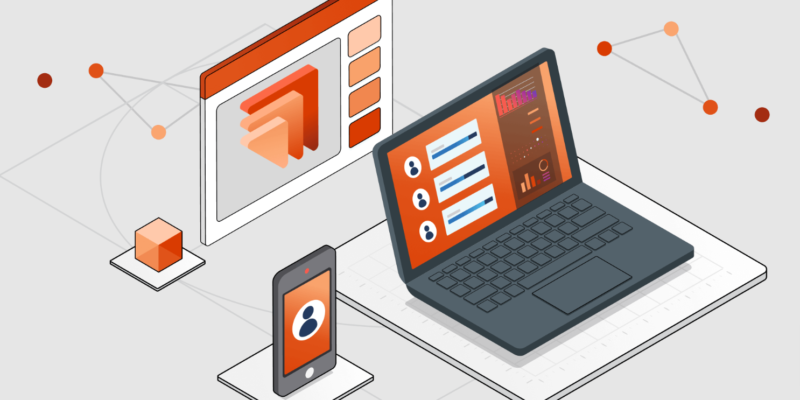Adopting Microsoft Dynamics for your business can bring transformative changes, improving efficiency and automating key processes. However, implementing a new ERP or CRM system is a significant decision that requires careful planning and choosing the right partner. If you’re a business in Egypt considering Microsoft Dynamics, here’s a step-by-step guide to help you navigate the process.
Step 1: Initial Consultation with a Microsoft Dynamics Partner
The first step in your Microsoft Dynamics journey is reaching out to a certified Microsoft Dynamics partner in Egypt. This partner will play a crucial role in guiding you through the entire process, from planning to implementation and beyond.
What to expect during the initial consultation:
- Understanding Your Needs: The partner will ask about your current business processes, goals, and pain points. They will want to understand what you hope to achieve with Microsoft Dynamics, such as improving customer relationships, streamlining operations, or automating tasks.
- Explaining the Solutions: The partner will introduce you to the different Microsoft Dynamics solutions, such as Dynamics 365 for Finance and Operations, Dynamics 365 for Sales, or Dynamics 365 for Customer Service. They will explain which of these solutions is best suited for your business needs.
- Overview of the Process: Expect the partner to walk you through the overall implementation process. This includes a rough timeline, expected costs, and the resources needed for a successful rollout.
At this stage, it’s important to ask the right questions. Here are some key questions to ask your Microsoft Dynamics partner:
- What is your experience in implementing Dynamics 365 for businesses in Egypt?
- Can you provide examples of companies in my industry that you have worked with?
- How do you handle data security and compliance, especially with Egyptian regulations?
- What is the average timeline for implementation?
- What training and support services do you offer post-implementation?
These questions will help you assess whether the partner is a good fit for your business and can meet your unique needs.
Step 2: Needs Analysis and Solution Customization
Once you have chosen a Microsoft Dynamics partner, the next step is to conduct a needs analysis. This is a deep dive into your current processes and workflows to determine how Dynamics can best serve your company.
What happens during the needs analysis:
- Review of Current Systems: Your partner will review the systems you currently use. This could include legacy software, manual processes, or disjointed systems. The goal is to identify areas where Microsoft Dynamics can provide value by replacing outdated systems or automating manual tasks.
- Defining Business Goals: Together with your partner, you’ll outline clear business goals. For example, if you’re a retail company in Egypt, you may want to improve inventory management and sales forecasting. If you’re in manufacturing, you might focus on automating production schedules and improving supply chain management.
- Customizing the Solution: Based on the needs analysis, the partner will customize Microsoft Dynamics to fit your business. This could involve configuring modules such as Financial Management, Supply Chain Management, or Human Resources. The customization ensures that the software aligns perfectly with your workflows and goals.
- Integration with Existing Systems: If you have other software or systems in place, the Dynamics partner will assess how to integrate Dynamics 365 with those tools. This ensures a smooth transition and allows you to continue using your existing systems while benefiting from the new Dynamics solution.
During this stage, ask your partner:
- How will Dynamics 365 integrate with our existing systems?
- What customizations will be necessary for our business?
- How will you ensure the software is scalable as our business grows?
Step 3: Implementation and Post-Implementation Support
Once the solution is customized, the next step is to implement Microsoft Dynamics. This is where all the planning and analysis come together, and the software is put into action. Effective implementation is critical to ensuring that your business sees the full benefits of Microsoft Dynamics.
What to expect during the implementation phase:
- Planning and Coordination: Your Microsoft Dynamics partner will create a detailed implementation plan, outlining tasks, milestones, and deadlines. Depending on the complexity of your business, the implementation may be phased, with each module or business unit going live at different times.
- Data Migration: One of the most important steps in the implementation process is migrating data from your old systems into Dynamics. This could include customer information, financial records, inventory data, and more. Ensuring the migration is done smoothly is key to avoiding errors and disruptions.
- Training Your Team: Microsoft Dynamics can be a powerful tool, but it requires proper training. Your partner will provide training sessions for your staff to ensure they understand how to use the system effectively. This could include everything from basic navigation to more advanced features.
- Go Live and Testing: Once everything is set up, your business will “go live” with the new system. This is when Microsoft Dynamics is fully operational. Testing is crucial here to ensure that the system functions as expected, and your team can start using it without issues.
After the initial implementation, post-implementation support is essential for ensuring long-term success.
What to expect in the post-implementation phase:
- Ongoing Support: Your Microsoft Dynamics partner should offer ongoing support to help you address any issues or questions. This could include troubleshooting technical problems, providing updates, and assisting with any new features you want to implement.
- Continuous Improvement: As your business grows and evolves, your needs may change. Your Dynamics partner will work with you to ensure the system continues to meet your needs, including future customizations or expansions.
- Regular Updates: Microsoft regularly releases updates for Dynamics 365. Your partner should keep your system updated with the latest features and security patches to ensure you’re always working with the best version.
Conclusion
Starting your Microsoft Dynamics journey in Egypt can be a transformative experience for your business. By following these three key steps—initial consultation, needs analysis and customization, and implementation with post-implementation support—you’ll be well on your way to optimizing your business operations. Working with a certified Microsoft Dynamics partner ensures that you get the most out of the system, setting you up for success now and in the future.
As you proceed, always remember to maintain clear communication with your partner, ask questions, and ensure that the solution is tailored to meet your specific business goals.


![[pii_email_57bde08c1ab8c5c265e8] error solved](https://realmediahubs.com/wp-content/uploads/2023/04/Pii-Errors-pii_email_-15-400x300.png)
![Solved [pii_email_728b405f3855592d09be] Error Code in Mail?](https://realmediahubs.com/wp-content/uploads/2023/04/Pii-Errors-pii_email_-14-400x300.png)
![How To Fix [pii_pn_af6c930f8fd2c0a8] Error Code in Mail?](https://realmediahubs.com/wp-content/uploads/2023/04/Pii-Errors-pii_email_-11-400x300.png)
![Fix MS Outlook [Pii_email_90ed722ef8a357c6c0aa] Error Code](https://realmediahubs.com/wp-content/uploads/2023/04/Pii-Errors-pii_email_-10-400x300.png)
![Fix [Pii_email_d2004079e8eb882afcaa] Error Code](https://realmediahubs.com/wp-content/uploads/2023/04/Pii-Errors-pii_email_-9-400x300.png)
![[pii_pn_8a68e8c174733080624b] Fix Outlook Error Code](https://realmediahubs.com/wp-content/uploads/2023/04/Pii-Errors-pii_email_-8-400x300.png)












Comments